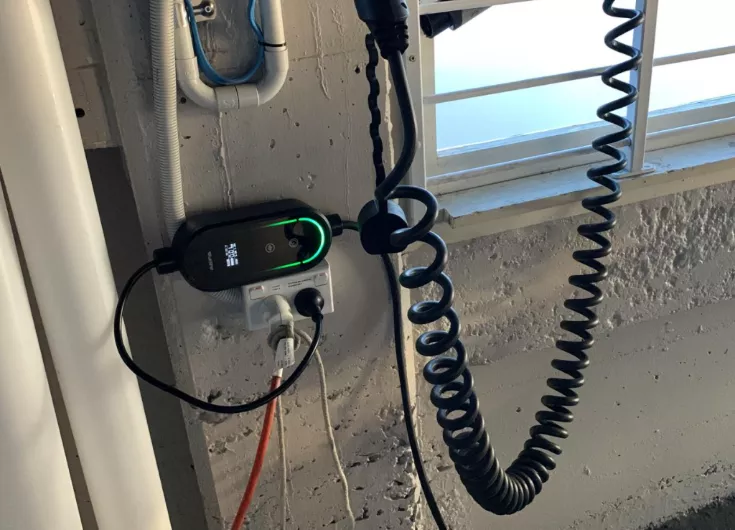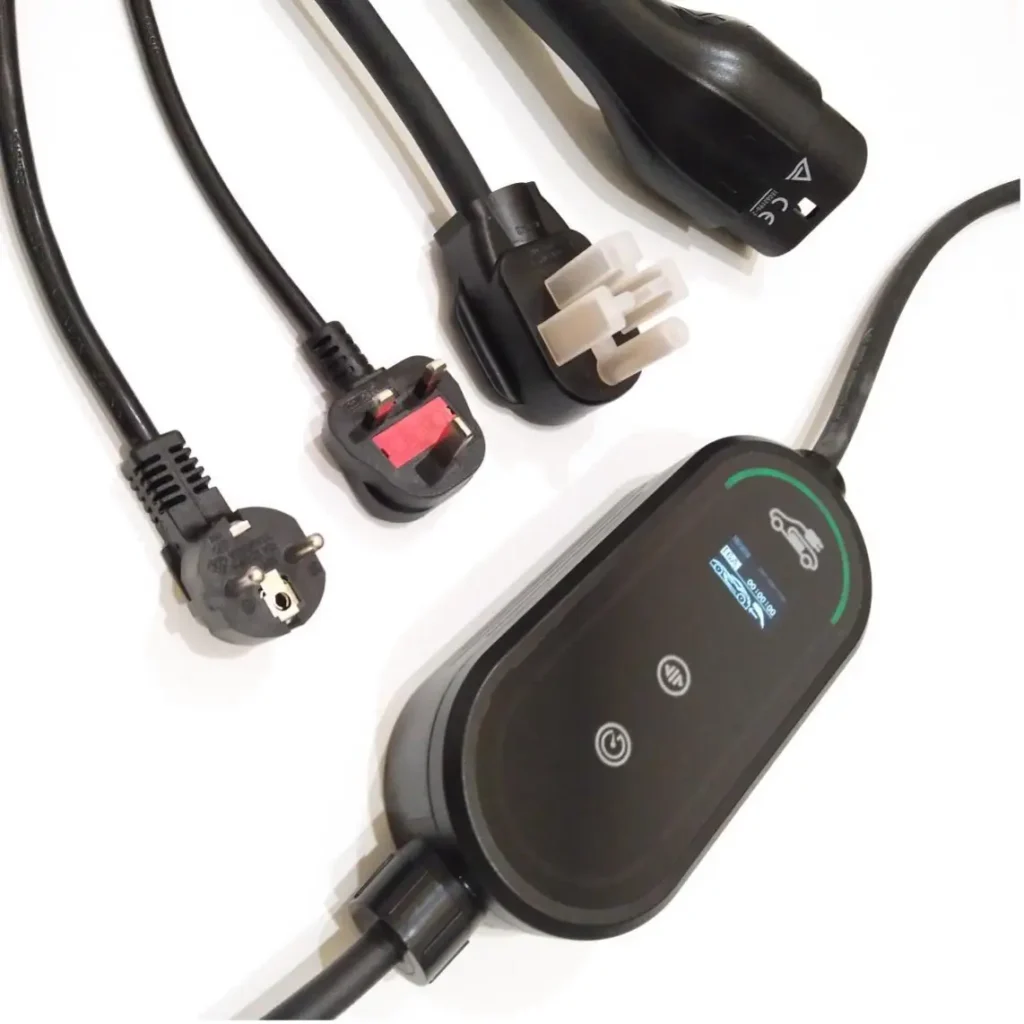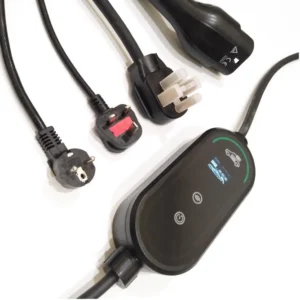What is a granny charger?
Granny Charger (commonly known as “portable charger” or “emergency charger”) is a portable charging device that is standard for electric vehicles. The name sounds weird, but it does make sense. Imagine that you are visiting your grandma or a family member, and there is no access for you to have a charger at home. This charger will be used as an alternative option.
Another granny charger quote from a 2012 Nissan Leaf owner who used a farmhouse outlet to charge his car while traveling in the countryside: Even my granny’s kitchen can handle this charger.
In summary, “Granny” symbolizes the group of technology rookie, emphasizing its zero-learning-cost operation feature – no need to understand the current and voltage parameters, just plug & charge.
Is the EV equipped with a Granny charger?
Most new electric vehicles are equipped with a granny charger, which is also known as “ICCPD”. However, regarding a second-hand car, you should investigate whether it comes with a granny charger or not.
Regardless of whether it is standard equipment or not, it is recommended that electric car owners have at least one reliable onboard charger.

Advantages and disadvantages of a granny charger
Advantages
- Battery health: Slow charging reduces lithium dendrite formation and extends battery life
- Affordable: the valley electricity cost is as low as 0.3 CNY/kWh, with no equipment installation fee
- Flexible emergency response: adapts to ordinary sockets and can be used in the wild/old communities
- Zero learning cost: plug and play, no professional circuit modification required
Disadvantages
- Efficiency flaw: 3kW power takes 20+ hours to fully charge a 60kWh battery
- Safety hazards: long-term use can easily cause the socket to overheat and needs to be replaced regularly
- Scenario limitations: cannot meet sudden long-distance or emergency energy replenishment needs
- Technology disconnection: does not support smart grid interaction and energy management
What benefits of using a granny charger for EV?
- Zero installation cost: No need for charging pile fees, no site restrictions
- Excellent for battery health: The lithium ion migration speed of slow charging (2.3- 3.5 kW) is 10 times slower than that of fast charging (50 kW+), which avoids damage to the electrode crystal structure.
- Dual Protection:
- Physical Protection: Ingress Protection Level: IP 67; Cutting off power supply when it’s 85 centigrade
- Ground Fault Detection (GFCI)
- Compatibility:
- China: GB/T 16A socket;
- Europe: Type E/F socket;
- North America: NEMA 14-50;
- Australia: AS/NZS 3112
- Grid-friendly: Relieve pressure on the power grid
What’s the best granny charger?
There are no best granny chargers in the world. Although the Previous ANS portable charger is one of them. Ans portable charger has been equipped with all the protections, certifications above. Optional for different plug types. However, we do not recommend long-term use of the granny charger. Home electric vehicle chargers or public charging stations are still the mainstream.

How long does it take to charge a Tesla Model Y using a granny charger?
Imagine that you have a standard model Y with a battery 60kwh capacity, you will need about 15- 20 hours with a charging speed of 3.5kw from 20%-80% of battery, which is Unbearable for some EV owners, especially when you are on a road trip.
So Granny charger can mainly be used for your emergency scenario when you are on a road trip overnight charge. If you want to get a full charge immediately, I would recommend that you use a DC fast charger.
How should I improve my charging speed if I am tired of using a granny charger?
You can install a home EV charger:
Home EV chargers charge faster, with a 7kW charge rate instead of 2.3kW, three times faster than Granny Charger. Home EV charger can provide Dynamic Load Balancing, charging reservation, Battery Preconditioning Technology, with more advanced technology.
You can charge at a public charging station with even more power.
Charging Speed: You can use a DC charger to charge an EV in a short time. For example,800V high-voltage.
platform models: Porsche Taycan/Xiaopeng G9 have achieved a 5-minute charging range.
Time Saving: Efficiency is 40 times higher than slow charging.

Shall I use the granny charger all the time?
Battery health
3.5kW low-power charging reduces lithium-ion migration by 60%, which is good for battery health.
Energy costs
| Charging method | Electricity cost (CNY/kWh) | Equipment depreciation | Overall cost advantage |
| Portable Charger | 0.33 (off-peak electricity) | 0.02 | 42% |
| Fast charging station | 1.50 (including service fee) | 0.15 | |
| Home charging station | 0.33 | 0.08 | 18% |
Efficiency
Using a granny charger to charge a car within 20 hours or even longer. (With more and more big capacity EVs published (120kwh), the usage of the granny charger is limited. No one can wait for 25 hours for such a long period.
In summary
To reduce the risk when using Granny Chargers, please follow the rules below:
- Make sure the wires are not aged, as age may put extra strain on the system, increasing the risk of overload. Consult your electrician when it is necessary.
- Always inspect the Outlet.
- Make sure extension cords, cables, or outlets are not exposed.
- Use Granny Chargers as an alternative option and avoid regular use.








